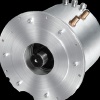|
Power play with electric cars
• Battery electric vehicles will remain money losers for the next
several years
• Purely battery electric vehicles will only achieve a market share of
around three percent by 2025
• New business models offer opportunities to gain a successful start
in the electric era
• The government must commit to massive investments for a
“Germany 2025 program for electric-powered mobility”
Over the next 15 years, battery electric vehicles will barely reach a market share of three
percent in the worldwide automotive sector. Substantial extra costs, which presently reach
as much as Euro 20,000 for a car in the same category as the Volkswagen Golf, and limited
driving ranges stand in the way of broad distribution of these vehicles. According to the
recent Oliver Wyman study “E-Mobility 2025,” the current hype about battery electric
vehicles should die down, but there’s no way of getting around electric-drive systems in the
long run – after all, battery electric vehicles are vital to the automotive industry’s long-term
chances of survival. Until then, the industry will be faced with unprecedented investment
requirements combined with an extremely limited earnings potential. Particularly during the
automotive crisis, the government needs to make massive investments in the German
automotive industry in order to safeguard its future viability. Otherwise, emerging markets
such as China will be cutting past the Germans.
Despite boastful announcements by automotive manufacturers, the line-up of battery electric
vehicles available to date is rather small. In 2009, fewer than 10,000 purely battery-driven cars will
be sold worldwide. From an overall market perspective, vehicles like the Tesla Roadster (Tesla
Motors) or TH!NK City (Think) are just a drop in the ocean, with a share of less than 0.1 percent of
the total car market. Likewise, the worldwide fleet of around 2.5 million hybrid vehicles is a marginal
phenomenon in view of the more than 850 million cars in the world. In 2010, just two percent of new
car sales will involve dual or partial electric drive. By 2025, their market share will rise to 16 percent
– but at that time at least 76 million vehicles, or 84 percent, will still have combustion engines. As a
result, cutting down carbon dioxide is and will remain the hot topic in the automotive industry.
Today, automakers are already investing about one-third of their worldwide research and
development expenditure of some Euro 75 billion on this goal on these efforts, which include both
further optimizing traditional combustion drives and developing alternative drive technologies for
serial production. In the next ten years, investments in reducing carbon dioxide worldwide will total
around Euro 300 billion – of which Euro 50 billion will be spent on alternative drive systems like
hybrid or electric.
New vehicle and drive concepts are crucial elements for the automobile. They are also key
ingredients for long-term survival in the competition with other transport modes and concepts. Drive
electrification will play a decisive role here because it will either support a combustion engine
electrically (mild hybrid), partially replace it during vehicle operation (full hybrid, plug-in hybrid) or
replace it completely (battery electric vehicle, fuel-cell vehicle). Apart from the mild hybrid version,
these new drive concepts enable emission-free driving at least locally. This new electric game does,
however, come equipped with many unknown factors: Customer expectations, markets, vehicle
concepts, drive technologies, costs, market participants and business models are leading to
unprecedented competition, or rather, power play, in the automotive industry. In addition, there is
huge uncertainty about future market prospects for the new drives over the next 15 to 20 years.
read more
|
|
Какъв автомобил бихте закупили?

|
Март 2025
|

|
|
| Нед |
Пон |
Вто |
Сря |
Чет |
Пет |
Съб |
| | | | | | | | | | | | | | | | | | | | | | | | | | | | | | | | | | | | | | | | | | |
|














